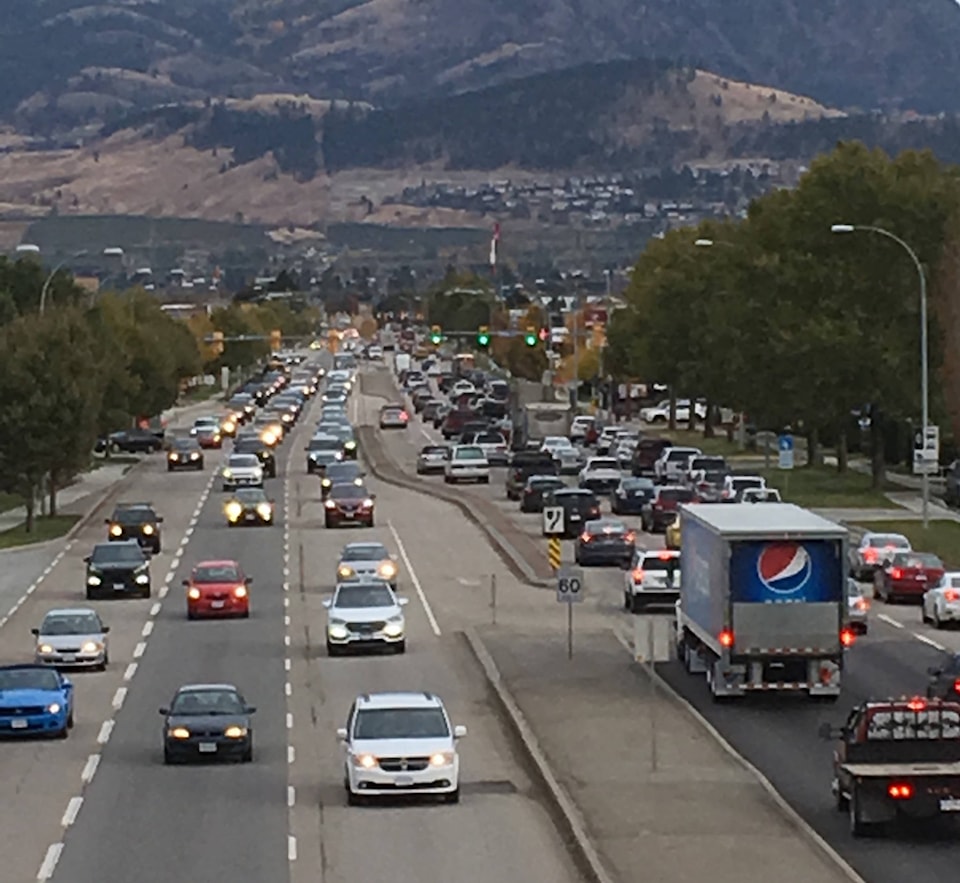In a bid to reduce greenhouse gas emissions in Kelowna, the city is looking at a number of initiatives aimed at cutting down on the amount of carbon released into the air by three main sources—vehicles, buildings and waste management.
On Monday, city council gave the green light to staff to proceed to public consultations with a new a climate change action plan that includes several moves aimed directly at vehicle emissions.
With an estimated 55 per cent of emissions coming from vehicles, the plan includes initiatives such as restricting future drive-thrus at restaurants, financial institutions, pharmacies and liquor stores and bringing in an anti-idling bylaw for vehicles in the city. Developing a community wide electric vehicle strategy, enhancing travel demand management programs, increasing the cost of hourly parking to be more than the cost of a single transit trip and investigating a regional fuel tax to pay for the expansion and improvement of alternative transportation were also initiatives in the plan.
“The release of greenhouse gas emissions and the resulting impacts on the climate have consequences for Kelowna’s economies, ecosystems and social well-being,” said the city’s sustainability coordinator Tracy Guidi in a report to council Monday.
“Municipalities have the ability to influence and lead greenhouse gas emissions (GHG) reductions through land-use planning, transportation options, building requirements and waste services. Moving towards a low carbon community helps create a city that Kelowna residents want to live in, as heard through Imagine Kelowna, a city that takes leadership on climate, transportation, urban sprawl, housing and the environment.”
According to the Guidi, 642,262 tonnes of carbon dioxide were released into the air in Kelowna in 2012 (the last year statistics are available for).
This year, Kelowna was hit with flooding in the spring and that was followed by one of the hottest summers on record, factors that contributed to devastating wildfires that blanketed the Valley in smoke for weeks at at time.
As global greenhouse gas emissions continue to grow, these types of extreme weather events are expected to occur more regularly, said Guidi.
Related story: Kelowna mayor frustrated by residents’ climate change message
In addition to the actions aimed at drivers, the plan also suggests a partnership with FortisBC on the delivery of hydro programs, developing a community energy retrofit strategy with incentives, a strategy to implement the province’s Step Code using education, incentives and regulations and updating the city’s OCP to include more energy inefficiencies.
“The city has a role to play. The city needs to show leadership,” Guidi told council Monday.
Councillors liked what they heard and said they looked forward to hearing from external stakeholders and the public.
Those consultations are expected to start next week with groups such as Canada Mortgage and Housing, the Urban Development Institute, which represents developers, and the city’s local car-share program. Consultation with the general public will take place early next year.
Coun. Luke Stack advised city staff to include local auto dealers in the consultations as they are the ones that advertise and sell vehicles in the community. He said he would like to see more electric cars on the local roads.
Coun. Gail Given suggested the plan update be used, in part, as a public education tool as it provides a lot of very useful information.
Mayor Colin Basran questioned why the supporting information is so old—from 2012. Guidi said that is the most recent information the city could get from the province.
The proposed new plan has a goal of reducing GHG emissions by four per cent over the next four years, a figure Guidi said may seem small but when projected population growth is factored in, would constitute a 28 per cent reduction per capita. The city has already reduced it’s emissions three percent compared to the benchmark 2007 levels, a figure that translates to 12 per cent per capita when growth is factored in.
If approved, city staff want the plan reviewed every five years to keep up with changing technology that Guidi said provide “game-changers” when it comes to dealing with the effects of climate change.
To report a typo, email: edit@kelownacapnews.com.
<>
awaters@kelownacapnews.com
Like us on Facebook and follow us on Twitter.
